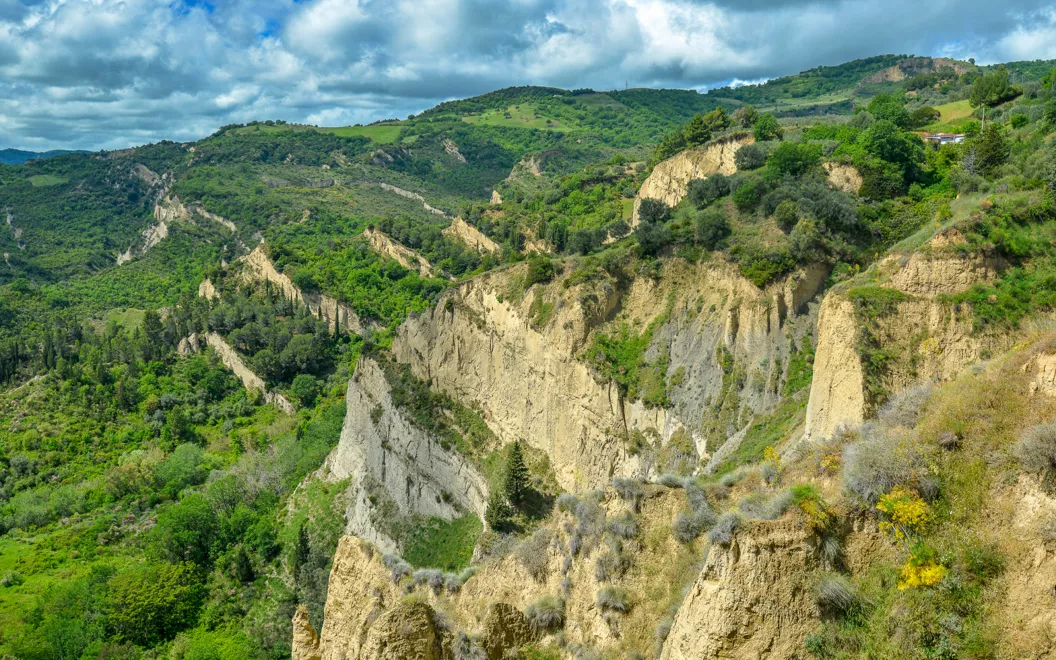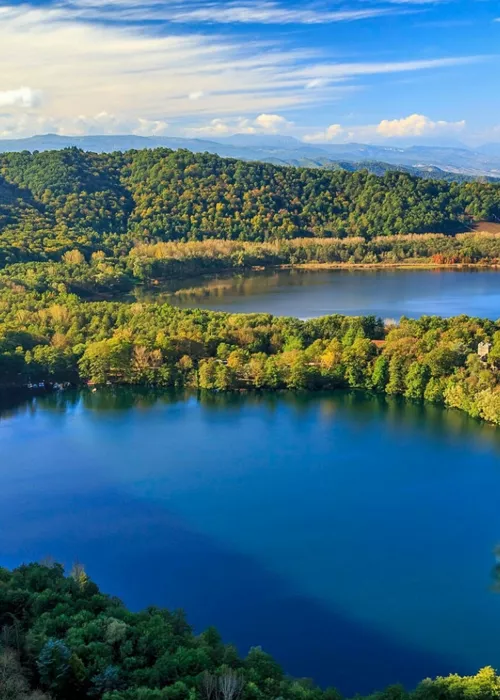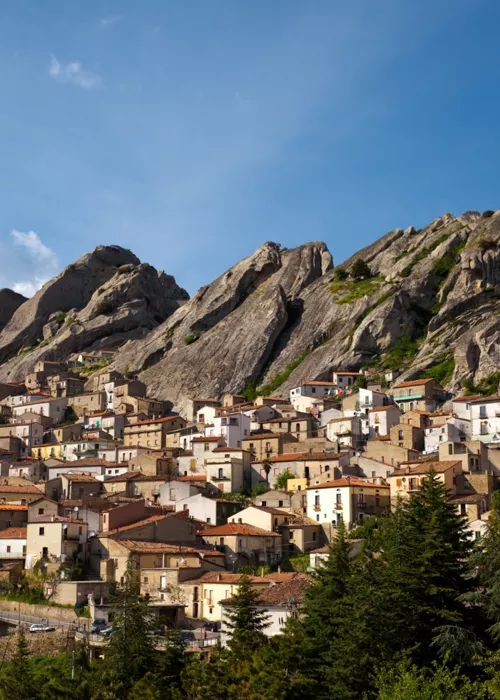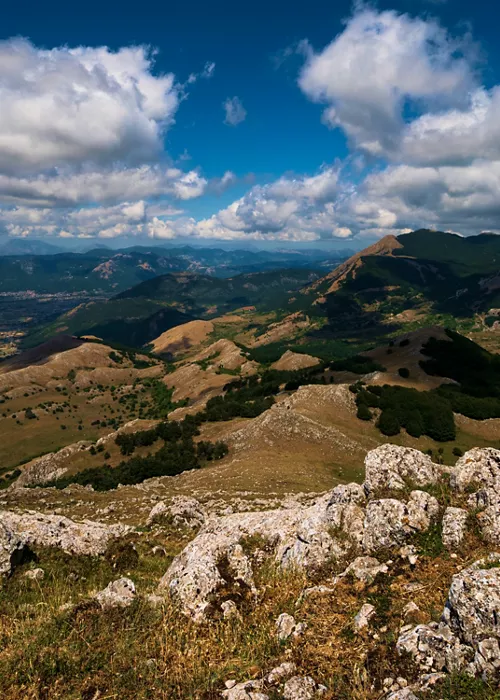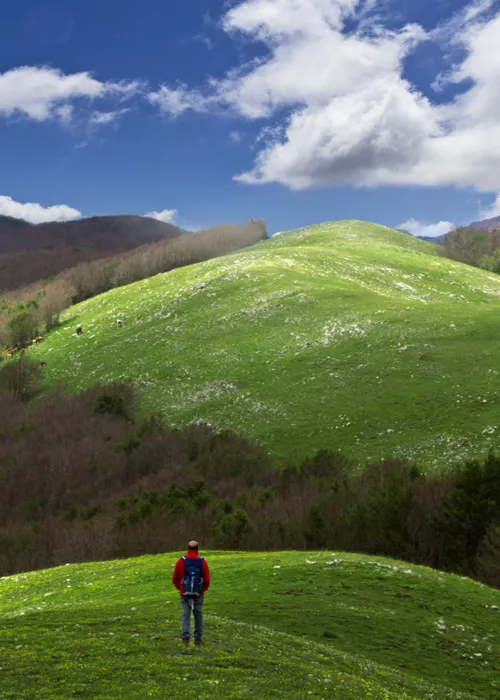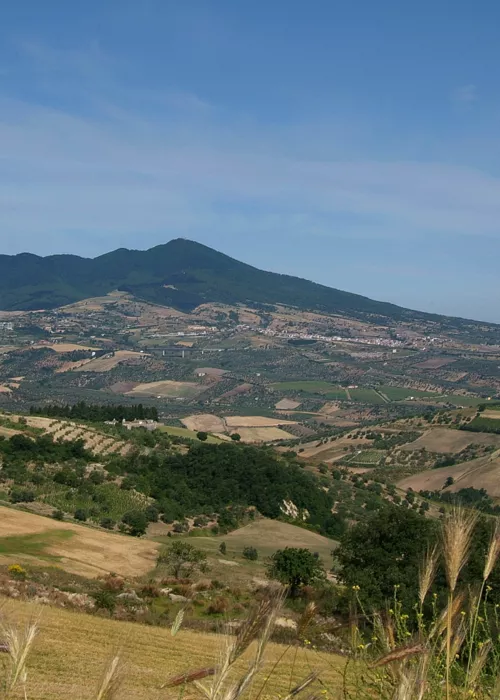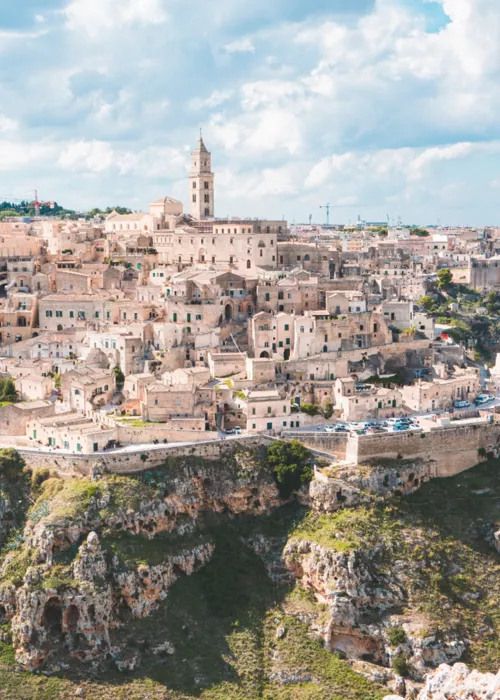Aliano and the places of Carlo Levi

"I thought Grassano was also a mountain village, and I imagined it to be surrounded by woods and steep climbs: instead, it is on top of a hill with a very slow slope, so that from above you cannot appreciate the difference in height, which is very great, with the bottom of the valley, which has become very wide here; and it almost seems to be on the plain. The hills are all cultivated with wheat; threshing machines work the fields and farmers ride horses to the distant fields".
This is how Carlo Levi describes one of the villages of his Lucanian exile, struck by a landscape that is gentler and more 'domestic' than the mountain reliefs and white clay walls of the Calanchi. An exile to which he had been forced by the fascist regime in 1935, in Grassano and then Aliano. An estrangement from social life imposed on him for his anti-fascist activism, an exile that led him to discover an Italy confined to the pain and toil of the camps, and which would inspire his novel "Christ Stopped at Eboli".
An intellectual from Turin, a writer and above all a painter, Levi died in Rome on 4 January 1975, but is buried in Aliano, the town at the centre of his most widely read and translated novel. A Literary Park was dedicated to his biography and above all to his work in 1998, a path of spaces and meanings that leads to discover the houses of the village, the mountains of Lucania and the legends of brigands.
Craco: the ghost town and the Calanchi road

If you're feeling a thrill, you're in the right mood to move on to another place that makes mystery its aesthetic signature. Craco is a "ghost town", abandoned in 1963 after a landslide, where you enter a dimension almost devoid of space and time.
The road to get there is worth a few more bends, because the stretch of provincial road from Aliano to Alianello is among the most beautiful in the Calanchi area. Along the winding route, you pass clay sculptures shaped over the centuries by water and wind in a landscape of spires and pinnacles.
The journey resumes: driving north for 50 kilometres along Provincial Road 4, you reach Tricarico in less than an hour.
Tricarico and Rocco Scotellaro, the 'mayor-poet'

The town clings to a limestone spur over the Basento valley and can be recognised even from afar by the profile of its Norman tower. In the 17th century it was the home of the painter Pietro Antonio Ferro and in 1923 it was the birthplace of the writer Rocco Scotellaro.
Rocco Scotellaro is remembered as the 'mayor-poet', for his political commitment to farmers' rights and for his work consisting of many lyrics, a novel and an investigation. Unfortunately, there is still no organised literary park, but the intellectual and emotional legacy is very much alive. This is evidenced by a large mural and the many initiatives inspired by his biography and work.
In the heart of the town stands the 13th-century Church of St Francis. The former convent, much remodelled, is home to the "Rocco Scotellaro" Documentation Centre, with a specialised library on Southern Italy and an important photographic archive with images by Henri Cartier-Bresson, Arturo Zavattini, Mario Carbone, Mario Cresci and Antonio Pagnotta.
If you want to combine intellectual pleasures with those of the table, do not leave Tricarico without a taste of its traditional dishes, renowned for the excellent meat of the indigenous black pig.
Brienza and the Mario Pagan Literary Park

Following the red thread of Lucanian auteur places, the next stop is Brienza, overlooking a deep gorge at the bottom of the Meledandro river valley. The oldest part of the village is surrounded by forests and mountains and is discovered among alleys and narrow streets that climb up towards the Angevin castle.
In 1748, the great jurist and patriot Mario Pagano was born in Brienza. He was hanged by the Bourbons in 1799 for having actively participated in the birth of the Neapolitan Republic. A bio-bibliographical museum is dedicated to him: curated by the "Francesco Mario Pagano" International Study Centre, it has over 5000 volumes. In the Francesco Mario Pagano Literary Park, on the other hand, it is possible to visit the places of his childhood and that were dear to him, as well as the works that commemorate him: the ruins of his birthplace on the slopes of the Caracciolo castle and the works that represent him, the famous painting by Giacomo Di Chirico, which portrays him as the judge reads him the death sentence in 1869, and the imposing bronze statue by Achille D'Orsi (1890) in the Town Hall square
Valsinni and the Isabella Morra Literary Park

The last stop on the journey is Valsinni, Orange Flag of the Italian Touring Club, at the gates of the Pollino National Park, a small place but brimming with history, artistic heritage, legends and literary stimuli.
From Brienza, it takes less than an hour to drive along State Road 598 Fondovalle d'Agri, turn off at the Monte Cotugno dam to reach an extreme offshoot of the Pollino, on the border between Basilicata and Calabria. Valsinni is dominated by Mount Coppolo and preserves the walls of ancient Lagaria, founded according to legend by Epeus, builder of the Trojan horse.
The most important monument is the Morra Castle, at the foot of which the alleys of the mediaeval village wind their way. Valsinni, and in particular its fortress, is linked to the story of Isabella Morra: a poetess, daughter of the castle's feudal lord, killed by her brothers accused of platonic love, legend has it that her ghost still roams the mediaeval castle. Morra is considered one of the most original and authentic voices of 16th century female lyric poetry. The "Isabella Morra" Literary Park is dedicated to her: inaugurated in 1993, it is one of the first literary parks to be created on the peninsula.
With the support of the Dante Alighieri Society, and thanks also to the visitor centre run by the Pro Loco, the Park uses poetry as a key to interpreting the territory, proposing journeys through memory, to discover the specificities of Valsinni. From Valsinni, the view sweeps over the villages clinging to the slopes to the peaks of the Pollino National Park.
To end the trip with a decisive change of scenery, one can descend the Sinni valley to the town of Rotondella. You can already see the Ionian Sea in the distance, from the last strip of Lucanian territory before Calabria.


